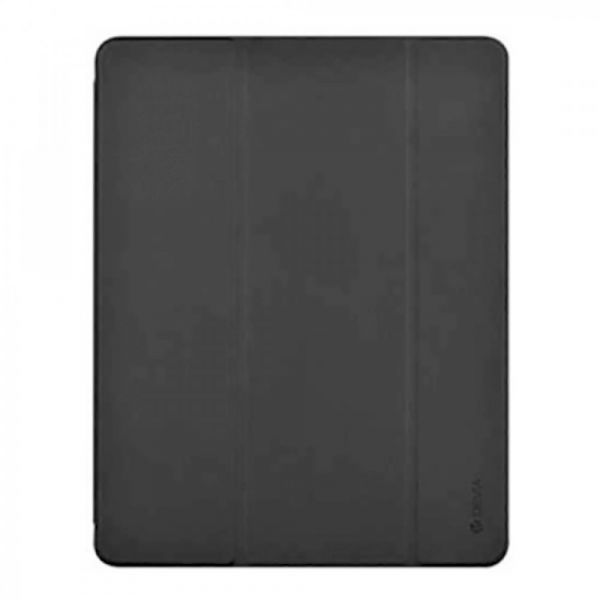Slot W
More than 25 FREE slots with large smoothly animated reels and realistic slot machine sounds. Play FREE and WIN CASH! Slotomania offers a wide range of free slots replicating the Vegas style slot machines special atmosphere. Another benefit of playing free casino slots games at Slotomania are our special perks: from free spins to bonus rounds, making your game even more enthralling. This product is intended for use by those 21 or older for amusement purposes only. Yes - There is a casino featuring roulette, black jack, and slot machines. It is open from 6:30 to 7:45 PM. 'Travel is fatal to prejudice, bigotry, and narrow-mindedness'-Mark Twain.
| Type | Slot |
|---|---|
| Chip form factors |
|
| Contacts | 242[1] |
| FSB protocol | AGTL+ |
| FSB frequency | 66, 100, and (on third-party chipsets) 133 MHz |
| Voltage range | 1.3 to 3.50 V |
| Processors | Pentium II: 233–450 MHz Celeron: 266–433 MHz |
| Predecessor | Socket 7 |
| Successor | Socket 370 |
| This article is part of the CPU socket series | |
- Welcome to the best place to play FREE online slots and video poker. Choose from 30+ totally FREE 3-reel and 5-reel slots. No installation or download needed, just.
- Gambling winnings from bingo, keno, or slot machines received by a payee in a 24-hour calendar day or 'gaming day' on a single information return. For more information, see the instructions for box 1 under Bingo, Keno, and Slot Machines. Specific Instructions for Form W-2G File Form W-2G, Certain Gambling Winnings, to report gambling.
Slot 1 refers to the physical and electrical specification for the connector used by some of Intel's microprocessors, including the Pentium Pro, Celeron, Pentium II and the Pentium III. Both single and dual processor configurations were implemented.
Intel switched back to the traditional socket interface with Socket 370 in 1999.
General[edit]
With the introduction of the Pentium II CPU, the need for greater access for testing had made the transition from socket to slot necessary. Previously with the Pentium Pro, Intel had combined processor and cache dies in the same Socket 8 package. These were connected by a full-speed bus, resulting in significant performance benefits. Unfortunately, this method required that the two components be bonded together early in the production process, before testing was possible. As a result, a single, tiny flaw in either die made it necessary to discard the entire assembly, causing low production yield and high cost.[citation needed]
Intel subsequently designed a circuit board where the CPU and cache remained closely integrated, but were mounted on a printed circuit board, called a Single-Edged Contact Cartridge (SECC). The CPU and cache could be tested separately, before final assembly into a package, reducing cost and making the CPU more attractive to markets other than that of high-end servers. These cards could also be easily plugged into a Slot 1, thereby eliminating the chance for pins of a typical CPU to be bent or broken when installing in a socket.
The form factor used for Slot 1 was a 5-inch-long, 242-contact edge connector named SC242. To prevent the cartridge from being inserted the wrong way, the slot was keyed to allow installation in only one direction. The SC242 was later used for AMD's Slot A as well, and while the two slots were identical mechanically, they were electrically incompatible. To discourage Slot A users from trying to install a Slot 1 CPU, the connector was rotated 180 degrees on Slot A motherboards.
With the new Slot 1, Intel added support for symmetric multiprocessing (SMP). A maximum of two Pentium II or Pentium III CPUs can be used in a dual slot motherboard. The Celeron does not have official SMP support.
There are also converter cards, known as Slotkets, which hold a Socket 8 so that a Pentium Pro CPU can be used with Slot 1 motherboards.[2] These specific converters, however, are rare. Another kind of slotket allows using a Socket 370 CPU in a Slot 1. Many of these latter devices are equipped with own voltage regulator modules, in order to supply the new CPU with a lower core voltage, which the motherboard would not otherwise allow.
Form factors[edit]
The Single Edge Contact Cartridge, or 'SECC', was used at the beginning of the Slot 1-era for Pentium II CPUs. Inside the cartridge, the CPU itself is enclosed in a hybrid plastic and metal case. The back of the housing is plastic and has several markings on it: the name, 'Pentium II'; the Intel logo; a hologram; and the model number. The front consists of a black anodized aluminum plate, which is used to hold the CPU cooler. The SECC form is very solid, because the CPU itself is resting safely inside the case. As compared to socket-based CPUs, there are no pins that can be bent, and the CPU is less likely to be damaged by improper installation of a cooler.
Following SECC, the SEPP-form (Single Edge Processor Package) appeared on the market. It was designed for lower-priced Celeron CPUs. This form lacks a case entirely, consisting solely of the printed-circuit board holding the components.
A form factor called SECC2 was used for late Pentium II and Pentium III CPUs for Slot 1, which was created to accommodate the switch to flip chip packaging.[3] Only the front plate was carried over, the coolers were now mounted straight to the PCB and exposed CPU die and are, as such, incompatible with SECC cartridges.
History[edit]
Historically, there are three platforms for the Intel P6-CPUs: Socket 8, Slot 1 and Socket 370.
Slot 1 is a successor to Socket 8. While the Socket 8 CPUs (Pentium Pro) directly had the L2-cache embedded into the CPU, it is located (outside of the core) on a circuit board shared with the core itself. The exception is later Slot 1 CPUs with the Coppermine core which have the L2-Cache embedded into the die.
In the beginning of 2000, while the Pentium-III-CPUs with FC-PGA-housing appeared, Slot 1 was slowly succeeded by Socket 370, after Intel had already offered Socket 370 and Slot 1 at the same time since the beginning of 1999. Socket 370 was initially made for the low-cost Celeron processors, while Slot 1 was thought of as a platform for the expensive Pentium II and early Pentium III models. Cache and core were both embedded into the die.
Slot 1 also obsoleted the old Socket 7, at least regarding Intel, as the standard platform for the home-user. After superseding the Intel P5Pentium MMX CPU, Intel completely left the Socket 7 market.
Chipsets and officially supported CPUs[4][5][edit]
Slot W Las Vegas
Intel 440FX [6][edit]
- Introduced in: May 6, 1996
- FSB: 66 MHz
- PIO/WDMA
- Supported RAM type: EDO-DRAM
- Supported CPUs:
- Pentium II with 66 MHz FSB
- Celeron (Covington, Mendocino)
- Used in both Socket 8 (Pentium Pro) and Slot 1 (Pentium II, early Celerons)
- Does not support AGP or SDRAM
- Allowed up to two CPUs for SMP
Intel 440LX [7][edit]
- Introduced in: August 27, 1997
- FSB: 66 MHz
- Supported RAM type: EDO-DRAM, SDRAM
- Supported CPUs: Pentium II, Celeron
- AGP 2× Mode
- UDMA/33
- Pentium II with 66 MHz FSB
- Celeron (Covington, Mendocino)
- Introduced support for AGP and SDRAM
- Allowed up to two CPUs for SMP

Intel 440EX [8][edit]
- Introduced in: April, 1998
- FSB: 66 MHz
- Supported RAM type: EDO-DRAM, SDRAM
- Supported CPUs: Pentium II, Celeron
- AGP 2× Mode
- UDMA/33
- Pentium II with 66 MHz FSB
- Celeron (Covington, Mendocino)
- Same specifications as 440LX, but memory support limited to 256MB and no SMP support.
Intel 440BX [9][edit]
- Introduced in: April 1998
- FSB: 66 and 100 MHz (some motherboards supported overclocking to 133 MHz, allowing usage of Socket 370 CPUs using a Slocket)
- AGP 2× Mode (max memory mapping 32 or 64 MB)
- UDMA/33
- Supported RAM types: SDRAM (PC66 and PC100, PC133 with overclocking) up to 4 DIMMs of 256 MB
- Supported CPUs:
- Pentium II with 66 and 100 MHz FSB
- Pentium III with 100 MHz FSB (133 with overclocking)
- Celeron (Covington, Mendocino, Coppermine)
- Allowed up to two CPUs for SMP

Intel 440ZX[edit]
- Introduced in: November 1998
- FSB: 66 and 100 MHz (some motherboards supported overclocking to 133 MHz, allowing usage of Socket 370 CPUs using a Slocket)
- AGP 2× Mode
- UDMA/33
- Supported RAM types: SDRAM (PC66 and PC100, PC133 with overclocking)
- Supported CPUs:
- Pentium II with 66 and 100 MHz FSB
- Pentium III with 100 MHz FSB (133 with overclocking)
- Celeron (Covington, Mendocino, Coppermine)
Intel 820/820E (Camino)[edit]
- Introduced in: November 1999
- FSB: 66, 100, and 133 MHz
- AGP 4× Mode
- UDMA/66 (i820), UDMA/100 (i820E)
- Supported RAM types: RDRAM, SDRAM (PC133)
- Supported CPUs: All Slot 1 CPUs
- Allowed up to two CPUs for SMP
Via Apollo Pro / Pro+[edit]
- Introduced in: May 1998 (Pro Plus: Dec 1998)
- FSB: 66, 100 MHz (some motherboards supported overclocking to 133 MHz, allowing usage of Socket 370 CPUs using a Slocket)
- AGP 2× Mode
- UDMA/33 (VT82C586B/VT82C596A), UDMA/66 (VT82C596B)
- Supported CPUs:
- Pentium Pro with 66 MHz FSB
- Pentium II with 66 and 100 MHz FSB
- Pentium III with 100 MHz FSB (133 with overclocking)
- Celeron (Covington, Mendocino, Coppermine)
Via Apollo Pro 133[edit]
- Introduced in: July 1999
- FSB: 66, 100, and 133 MHz
- AGP 2× Mode
- UDMA/33 (VT82C596A), UDMA/66 (VT82C596B/VT82C686A), UDMA/100 (VT82C686B)
- Supported CPUs: All Slot 1 CPUs

Via Apollo Pro 133A[edit]
- Introduced in: Oct 1999
- FSB: 66, 100, and 133 MHz
- AGP 4× Mode
- UDMA/66 (VT82C596B/VT82C686A), UDMA/100 (VT82C686B)
- Supported CPUs: All Slot 1 CPUs
- Allowed up to two CPUs for SMP
See also[edit]
References[edit]
- ^'CPU Sockets Chart'. erols.com. Retrieved 2009-03-31.
- ^'PPro on a BX?-Usenet Gateway'.
- ^http://www.tomshardware.com/reviews/overclocking-special,94-2.html[dead link]
- ^List of Intel chipsets
- ^List of VIA chipsets
- ^Intel Corporation: 440FX PCIset Datasheet
- ^Intel Corporation: 440LX AGPset Design Guide[permanent dead link]
- ^Intel Corporation: 440EX AGPset Design Guide
- ^Intel Corporation: 440BX AGPset Design GuideArchived 2012-10-04 at the Wayback Machine
External links[edit]
| Wikimedia Commons has media related to Slot 1. |
- Intel's specifications for the SC242 connectors[permanent dead link]
Slatwall
Slot Machines For Sale by Used Slot Machine Distributor Used Slot Machines has the best Antique Slot Machines and Refurbished Slot Machines in the industry.
View our inventory of slot machines
Slot W Woolworth
We offer one of the best warranty’s available with one year warranty on all of our Used slot machines.
All Of Our Games Come With New Batteries And Rebuilt Power Supply.
Visit our Facebook Page for News and Info
Showing 1–16 of 442 results
Gaming Slots
Williams Bluebird 2 Knight’s Keep Item 10008
$1,499.00Williams Bluebird 2 Bird Of Prey Item 10007
$1,499.00Williams Bluebird 2 Dragon’s Fire Item 10006
$1,499.00Williams Bluebird 2 Buffalo Spirit Item # 10005
$1,499.00Konami Reel Diamond Solitaire Deluxe Item # 9102
$799.00Konami Reel African Treasure Deluxe Item # 9101
$799.00Konami Reel Golden Theater Deluxe Item # 9103
$799.00Konami Reel Super Ruins Gold Item # 5008
$699.00Konami Reel Super Sparkling Sevens Item # 5004
$699.00IGT S2000 FDNY 911 Fire Man Custom Slot Machine Item # 20000
$0.00Williams Bluebird 2 Tiger’s Realm Item # 10004
$1,499.00Williams Bluebird 2 Jackpot Block Party Item # 10003
$1,499.00Williams Bluebird 2 I love Lucy Item # 10002
$1,499.00Williams Bluebird 2 Zeus III Item # 10001
$1,499.00Williams Bluebird 2 Wizard Of Oz Ruby Slipper Item # 10000
$1,499.00IGT S2000 Double Five Times Pay 3 Coin Item # 177
$500.00